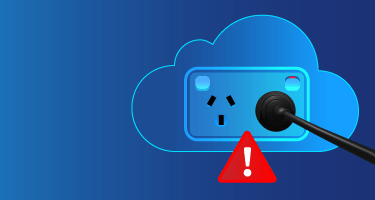Reasons to Move, and Reasons Not to Move, to the Public Cloud
Reasons to Move, and Reasons Not to Move, to the Public Cloud Public cloud adoption is more popular now than ever. Companies across all industries are modernizing their environments to support remote work, lower costs, and improve reliability. In fact, Gartner predicts global public cloud end-user spending to increase by 23% in 2021. Despite this momentum, it’s important to realize the public cloud isn’t an ideal fit for every organization. Many companies rushed into the cloud during the pandemic without fully understanding the implications. Now, issues are surfacing — and some businesses are reconsidering their migration altogether. This post explores the pros and cons of moving to the public cloud. Keep reading to learn more about whether the cloud makes sense for your business, and the reasons to move, and reasons not to move, to the public cloud. What Is the Public Cloud? The public cloud is a framework that lets you access on-demand computing services and infrastructure through a third-party provider. In a public cloud environment, you’ll share the same hardware, software, and network services as other companies or tenants. It’s different from a private cloud environment where your company receives access to private, hosted infrastructure and services. To illustrate, it’s like staying in a hotel versus renting a private cottage on Airbnb. A few of the top public cloud providers on the market include Amazon Web Services (AWS), Google Cloud Platform (GCP), Microsoft Azure, Alibaba Cloud, and IBM Cloud. Public cloud services can refer to infrastructure as a service (IaaS), software as a service (SaaS), and platform as a service (PaaS) models. Top Reasons for Public Cloud Adoption Companies have a variety of reasons for migrating to the public cloud. Here’s a few of them. Replacing the Data Center and Lowering Computing Costs Enterprises are increasingly moving away from data centers. In fact, by 2025, 80% of enterprises will shut down their traditional data centers. Companies with aging data centers can avoid retrofitting facilities or building new ones by migrating to the public cloud and leveraging hosted infrastructure instead. This greatly reduces costly builds and minimizes operational expenses. Achieving Rapid Scalability The public cloud enables rapid scalability. You can significantly increase storage and compute power through the public cloud at a fraction of the cost of expanding your existing infrastructure. The public cloud is particularly useful for growing startups that need to be able to accommodate massive usage increases. It’s also ideal for organizations that experience seasonal spikes in sales. For example, an e-commerce provider might use the public cloud when ramping up production and sales around the holidays. By the same token, the public cloud provides flexibility to easily scale back down during lulls. Accessing Managed Services The service provider manages the underlying hardware and software in a public cloud deployment. They also typically provide security, monitoring, maintenance, and upgrades. This approach enables you to take a hands-off approach to managing infrastructure. Your IT team can focus on other business needs, with the expectation that the public cloud provider will keep your services up and running within the scope of the service-level agreement (SLA). Reducing IT Burden Right now, there’s a widespread IT staffing shortage. The issue is particularly bad in the data center industry, where 50% of data center owners and operators are having difficulty finding qualified candidates for open jobs. If your company’s having a hard time finding qualified IT workers, you may want to consider outsourcing operations to the public cloud. This can free your IT workers from grunt work and enable them to take on more valuable projects. At the same time, your IT team can still manage its public cloud environment. For example, they can still perform data governance and identity and access management (IAM). They just won’t have to worry about maintaining or upgrading any hardware or software. Strengthening Business Continuity and Disaster Recovery (BC/DR) Another reason why companies migrate to the cloud is to improve their BC/DR posture. Business continuity involves establishing a plan to deal with unexpected challenges like service outages. Disaster recovery is all about restoring network access following an issue like a cyberattack or natural disaster. Companies often rely on the public cloud to establish BC and DR across two or more geographically separate locations. Running a BC/DR strategy through the cloud is much more efficient, as it prevents you from having to maintain a fully functioning recovery site 24/7. This approach drastically reduces costs. At the same time, using the public cloud can guarantee full operational BC/DR availability. This can provide the peace of mind that comes with knowing you can keep your business running when emergency strikes. Why Companies Avoid the Public Cloud Without a doubt, the public cloud offers several exciting advantages for businesses. But there are also a few major drawbacks to consider. Here are some of the top reasons why companies might avoid the public cloud. Higher Costs Companies often expect instant cost savings when migrating to the cloud. In reality, cloud services can sometimes be more expensive than on-premises data centers — at least at first. Oftentimes, companies fail to achieve true cost savings until they learn how to take full advantage of the public cloud. This can take months or years. It’s important to carefully break down cloud migration costs and ROI before moving to the public cloud to get an accurate understanding of the move’s short-, medium-, and long-term financial impact. In some cases, companies find they fare better with their existing setups. Data Ownership Concerns Right now, there’s an ongoing debate about who owns data in the public cloud. Some cloud providers attempt to retain ownership of some or all of the data they store. As such, many business leaders fear storing data in the public cloud, and some simply can’t risk it. Instead, they choose to avoid the issue by using their own dedicated infrastructure. It’s a good idea to talk with your team before migrating to the public cloud and conduct a security and privacy
Reasons to Move, and Reasons Not to Move, to the Public Cloud Read More »
Uncategorised


